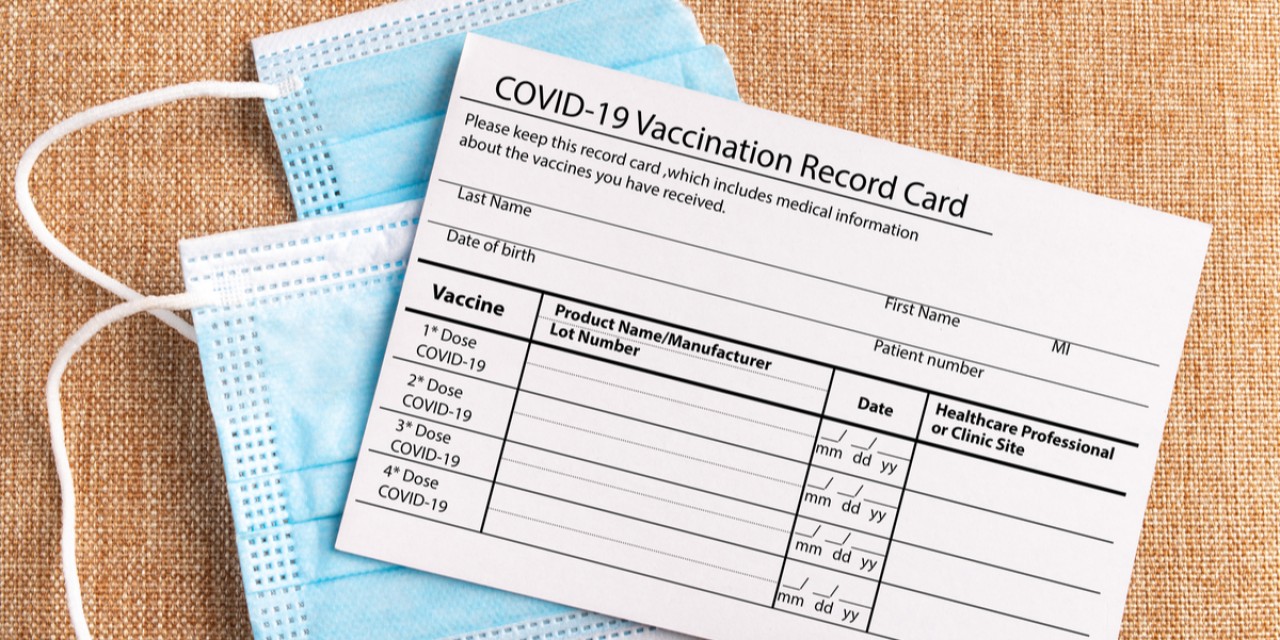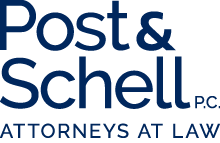OSHA Issues COVID-19 Vaccination Emergency Temporary Standard (ETS)

On November 4, 2021, the U.S. Department of Labor’s Occupational Safety and Health Administration (“OSHA”) announced a new emergency temporary standard (“ETS”) to protect workers from the spread of COVID-19 while on the job. This new ETS requires covered employers to develop, implement, and enforce a mandatory COVID-19 vaccination policy or adopt a policy requiring employees to choose to either be vaccinated or undergo regular COVID-19 testing and wear a face covering at work.
The ETS also preempts “inconsistent state and local requirements” relating to vaccination, vaccination verification, face covering, and testing requirements. Failure to comply with the ETS can result in OSHA penalties of up to $13,653 for each serious violation.
Which employers are covered under the new ETS?
The ETS covers employers that have 100 or more employees, either firm- or company-wide, at any point in time while the ETS is in effect. This means that for a single corporate entity with multiple locations, all employees at all locations are counted for purposes of the 100-employee threshold for coverage. In determining the number of employees, employers must include all employees (including part-time employees) across all U.S. locations, regardless of employees’ vaccination status or where they perform their work. For enforcement purposes, traditional joint employer principles apply.
In states with OSHA-approved State Plans, state and local government employers with 100 or more employees, as well as private employers, will be covered by state occupational safety and health requirements.
Workplaces covered under the Safer Federal Workforce Task Force COVID-19 Workplace Safety: Guidance for Federal Contractors and Subcontractors are not covered by this ETS. Moreover, workplaces or employers that provide healthcare services or healthcare support services when subject to the requirements of the Healthcare ETS (29 CFR §1910.502) effective June 21, 2021 are not covered. Public employers in states without OSHA-approved State Plans also are not covered by the ETS.
Which employees are covered?
The ETS applies to employees of the above-covered entities, unless:
- The employees do not report to a workplace where other individuals are present;
- The employees work from home; or
- The employees work exclusively outdoors.
Employees who work both remotely and in a setting where other people are present are covered by this ETS and must be vaccinated if required by the employer, or if the employer does not require vaccination, employees must either be vaccinated or complete testing and wear a face covering.
Despite the ETS mandate, it is important for employers to remember that they must consider reasonable accommodations for those covered employees who cannot be vaccinated or cannot wear a face covering because of a disability or sincerely held religious belief.
Under the ETS, all newly hired employees have to be vaccinated as soon as practicable.
What is required to comply with the new ETS?
In order to comply with this ETS, employers must:
- Develop, implement, and enforce a policy that either:
- Requires mandatory COVID-19 vaccination; or
- Allows employees to elect either to get vaccinated or to undergo weekly COVID-19 testing and wear a face covering at the workplace.
- Determine the vaccination status of each employee, obtain acceptable proof of vaccination status from vaccinated employees, and maintain records and a roster of each employee’s vaccination status.
- Support vaccination by providing employees reasonable time, including up to four hours of paid time, to receive each primary vaccination dose, and reasonable time and paid sick leave to recover from any side effects experienced following each primary vaccination dose.
- Ensure that each employee who is not fully vaccinated is tested for COVID-19 at least weekly (if in the workplace at least once a week) or within 7 days before returning to work (if away from the workplace for a week or longer).
- Require employees to promptly provide notice when they receive a positive COVID-19 test or are diagnosed with COVID-19.
- Immediately remove from the workplace any employee, regardless of vaccination status, who received a positive COVID-19 test or is diagnosed with COVID-19 by a licensed healthcare provider and keep the employee out of the workplace until return to work criteria are met.
- Ensure that each employee who is not fully vaccinated wears a face covering when indoors or when occupying a vehicle with another person for work purposes, except in certain limited circumstances.
- Provide each employee with information, in a language and at a literacy level the employee understands, about:
- The requirements of the ETS and workplace policies and procedures established to implement the ETS;
- Vaccine efficacy, safety, and the benefits of being vaccinated (by providing the CDC document “Key Things to Know About COVID-19 Vaccines”);
- Protections against retaliation and discrimination; and
- Laws that provide for criminal penalties for knowingly supplying false statements or documentation.
- Report work-related COVID-19 fatalities to OSHA within 8 hours of learning about them, and work-related COVID-19 in-patient hospitalizations within 24 hours of the employer learning about the hospitalization.
- Make certain records available for examination and copying to an employee (and to anyone having written authorized consent of that employee) or an employee representative.
When is the deadline to comply?
The effective date of the ETS is November 5, 2021. Although the ETS is effective immediately, employers have until December 5, 2021 to comply with the majority of the provisions of the ETS. Employers have until January 4, 2022 to comply with the testing requirements for employees who are not fully vaccinated, meaning that covered employees have until January 4, 2022 to become fully vaccinated or be subject to weekly testing.
Takeaways
The ETS does not require employers to pay for the costs associated with employee testing or pay for required face coverings. However, employers should be aware of other laws, regulations, collective bargaining agreements, or other collectively negotiated agreements that may require them to pay for testing. Similarly, while the ETS does not require employers to pay for the costs associated with employees being tested, employers also need to carefully consider whether travel time for employees to be tested and other costs will be compensated in order not to run afoul of any federal or state wage and hour laws.
As referenced above, employers also must be mindful of their obligations under federal, state, or local anti-discrimination laws as they work to comply with the ETS. When developing the required policy, employers must provide employees with the opportunity to seek exemptions due to disability or sincerely held religious beliefs. To comply with the ETS, any covered employee who is issued an exemption will need to undergo weekly COVID-19 testing and wear a face covering in the workplace.
The ETS establishes minimum requirements for employers, i.e. nothing in the ETS prevents states, localities or employers from implementing more protective requirements (for example, mandating COVID-19 vaccination absent a testing protocol). As a result, employers covered by the ETS also need to ensure that they are complying with state and local laws related to vaccination, vaccination verification, face covering and testing.
The ETS is the third significant push by the Biden administration to encourage all citizens to get vaccinated. Large employers now join federal contractors, whose vaccination compliance deadline was just extended to be consistent with this ETS and fifteen different categories of health care providers who are subject to new vaccination regulations from the Centers for Medicare and Medicaid Services (“CMS”). Unlike the OSHA regulations for large employers, CMS’s regulations require covered health care providers to mandate that all staff get vaccinated or to be granted an exemption because of a disability or sincerely held religious belief. Health care providers cannot offer staff the option to be tested weekly in lieu of getting vaccinated. Similar to the ETS and federal contractor regulations, employees of covered health care providers must be fully vaccinated by January 4, 2022.
A lawsuit challenging the ETS already has been filed and, while we expect more lawsuits challenging the ETS and other federal mandates to follow, it is unclear how any litigation will fare. Accordingly, covered employers should begin implementing the ETS immediately to ensure that they are complying with its requirements by its deadlines.
Related Resources:
On November 9, 2021, our Employment and Labor Practice Group provided insight and analysis regarding OSHA's ETS, its impact on employers, and how employers can prepare and respond.
Click here for a replay of the webinar.
On November 12, 2021, the U.S. Court of Appeals for the Fifth Circuit reaffirmed its stay of the Occupational Safety and Health Administration’s (OSHA) emergency temporary standard (ETS) that set COVID-19 vaccination and testing requirements for employers with 100 or more employees.
Click here to read, "Fifth Circuit Maintains Stay on OSHA’s 100 + Employer Mandate, Case Assigned to Sixth Circuit."
Disclaimer: This post does not offer specific legal advice, nor does it create an attorney-client relationship. You should not reach any legal conclusions based on the information contained in this post without first seeking the advice of counsel.
